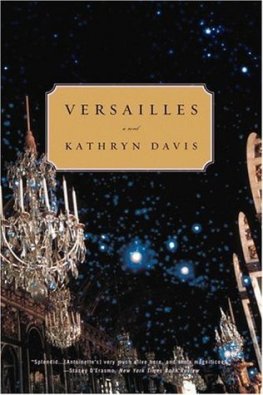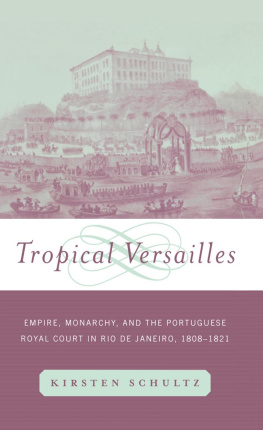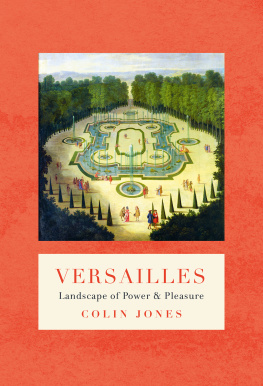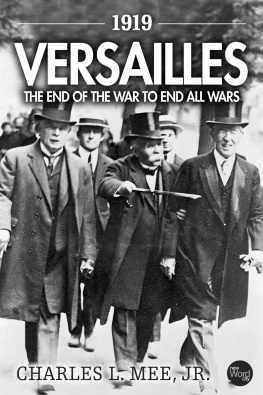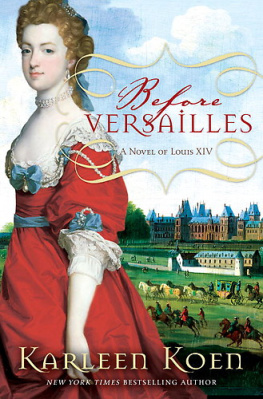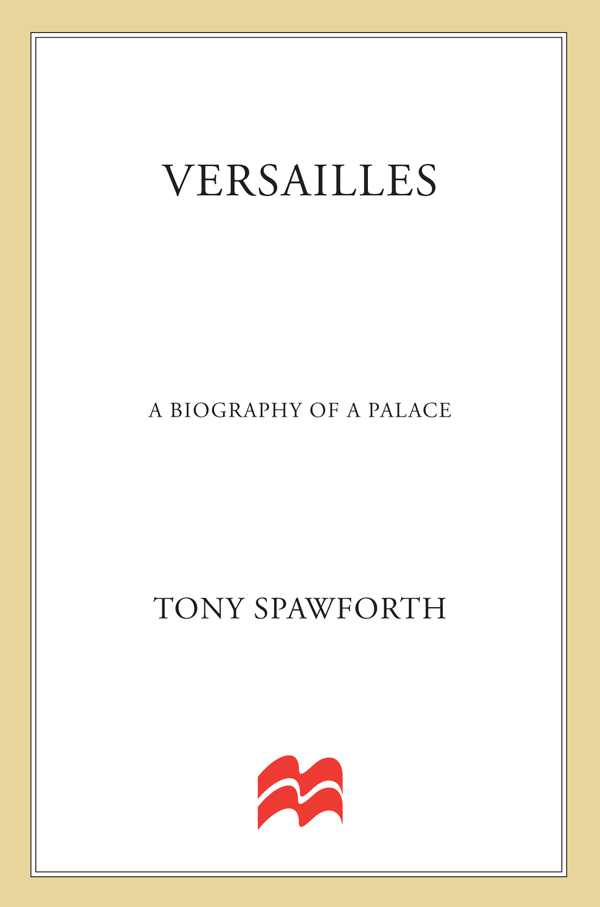Contents
Guide

The author and publisher have provided this e-book to you for your personal use only. You may not make this e-book publicly available in any way. Copyright infringement is against the law. If you believe the copy of this e-book you are reading infringes on the authors copyright, please notify the publisher at: us.macmillanusa.com/piracy.
IN MEMORY OF
G. G. MEYNELL
T HIS BOOK is about the real Versailles: the historical reality behind a palace that achieved mythic stature almost as soon as it had been built. Versailles was once ral in a sense of a French word already antiquated when Versailles was being built: a royal palace, seat of what at the time (the later seventeenth and the eighteenth centuries) was the most charismatic monarchy in Europe. The atmosphere of legend around Versailles draws strength from the tragic ingredients of its royal story. A beautiful palace built by a proud king blazed with glory for a century. Then, abruptly, comeuppance arrived with a revolutionary mob that burst in and led off the kings hapless descendants to a gory death.
There are many books about the palace of Versailles written, like this one, for the general reader. Most belong on the architectural or horticultural shelves of a bookshop. Versailles: A Biography of a Palace aims at the gap left by the absence of an up-to-date account of the human and the historical story.
Versailles belonged to a particular moment in French history. It was conceived by the French monarchy as a solution to its political problems. In the end, the palace and what it represented added to those problems. This book is by no means a political history. But ponderings on the causes of the French Revolution are bound to lurk in the background.
Building-history, it is sometimes said, is boring history. To animate royal Versailles, this book draws on the writingsworldly, funny, sharp-eyed, and occasionally movingof a handful of figures who knew the palace intimately. These accounts preserve the authentic voices of royal Versailles. They are mainly royalty and aristocrats because these were the people for whom Versailles was built. An upper servant is occasionally heard, such as Madame Campan, Marie-Antoinettes first woman of the bedchamber. They all wrote in the idiom of a courtly civilization that the Revolution swept away so comprehensively that when the survivors returned from exile, they found not only French customs but also the French language transformed. We should not expect these voices to speak as we do. But we can still relish their ear for a good story.
Scribing courtiers like the duc de Saint-Simon or the duc de Luynes took for granted an in-depth knowledge of the palace. Versailles has since changed so much that most of its layout as a working palace remains a mystery to the visitor, who sees nothing of kitchens, stables, storerooms, nursery, lodgings for courtiers, quarters for servants, or ministries. This book places eyewitness anecdotes and reminiscences as precisely as possible. These bring to life for the reader, not only the famous spaces like the Hall of Mirrors or Louis XIVs bedchamber, but the byways of a complex once likened to a small town.
Versailles is an archaeological site. Todays visitor can walk once more on the winding paths in Marie-Antoinettes garden, which the spade has rescued from long oblivion. Another kind of excavator works with the original manuscripts from the archives of the vanished department of state known as the Kings Buildings. The French monarchy built and maintained Versailles on strict bureaucratic principles. Original inventories, estimates, orders, invoices, correspondence with palace officials and lodgers, and architectural plans, all survive, most of them in Frances Bibliothque Nationale.
This Aladdins cave offsets the fact that most of royal Versailles was destroyed in the nineteenth century. Versailles has had a longer life since its drastic conversion into a museum than as a palace. The documents allow vanished royal rooms to be reconstructed not just on paper but in reality. Down to the tiniest detail of daily life, they offer glimpses of how the palace functioned as a residence and seat of government. They shed light on royal secrets.
Consulting these papers, specialists painstakingly piece together the history of the building, the ceaseless repairs and alterations, and, in recent years, the history of the individual lodgings in what was once a vast apartment block. A general book on Versailles is based on this edifice of learning, one that continually grows. But there still remains, as there will for a long time, much work to do All books about Versailles, including this one, are perforce provisional.
One of the pleasures of writing about the palace is exploring Versailles itself. The town is a historical gem that most visitors to the palace ignore. Strolling its peaceful eighteenth-century streets at night, the crowds gone, past carriage gateways and street fountains dating back to royal times, is an atmospheric experience. I am hugely indebted to the expert tours and lectures organized by the Socit des Amis de Versailles. These provide a uniquely informative way of exploring the town. Above all, they open doors in the palace that normally remain closed to the public.
This book rests on the labors of others. My huge debt to the specialist scholars who write about Versailles is clear from the citations. Versailles: A Biography of a Palace could not possibly have been written without the chain of learned books and articles that reaches back to Pierre de Nolhac, nineteenth-century founder of the French school of Versailles scholarship.
Other debts are also gratefully acknowledged here. At the Muse National des Chteaux de Versailles et du Trianon, I am obliged to M. Pierre Arizzoli-Clmentel, Directeur Gnral, along with M. Roland Bossard, for responding helpfully to my queries.
For help and support of various kinds, including many conversations from which I alone came away the wiser, I would like to thank Richard Archer, Simon Burrows, Jim Crow, Erica Davies, Christine Donougher, Dominique Florentin, Xavier Gugan, Rachel Hammersley, Marie-Christine Keith, Philip Mansel, Alex Martin, Cathy McClive, Elinor Meynell, the Estate of the late G. G. Meynell, Munro Price, Franois-Joseph Ruggiu, Rowland Smith, Lee Stannard, John Wakefield, and Imogen Walford.
I thank Yaniv Soha and his team at St. Martins Press for their efficiency and exactitude, and Sheila C. Severn Newton for drawing the map and plan.
Finally, I owe particular debts to Roderick Conway Morris, who generously put time aside to read the book in draft, and to my agent, Andrew Lownie, who has given unwavering support to the project since its earliest stages.
TONY SPAWFORTH
London, September 2007
( FIRST FLOOR OF THE CENTRAL BLOCK UNDER LOUIS XVI )
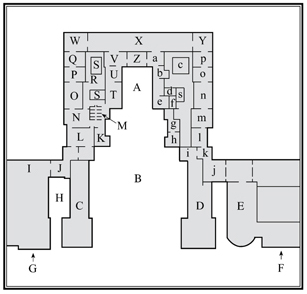
A. Marble Court | V. Antechamber of the Bulls Eye |
B. Royal Court | W. Salon of Peace |
C. Old Wing | X. Hall of Mirrors |
D. Gabriel Wing (formerly Government Wing) | Y. Salon of War |
E. Chapel | Z. Louis XIVs bedchamber |
F. North Wing | a. Official study or council room |


